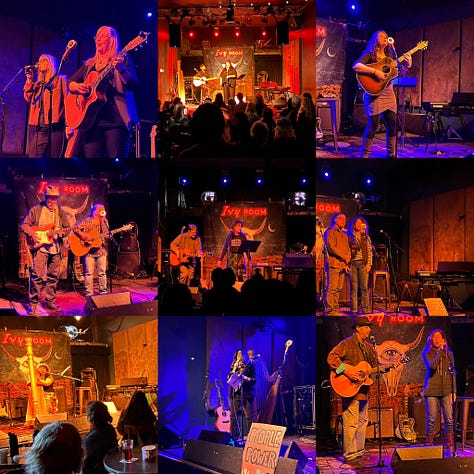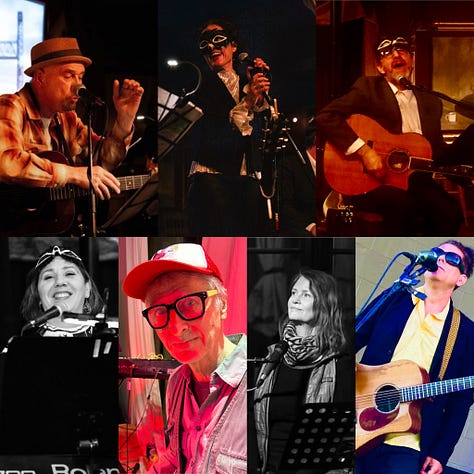While driving to Berkeley the other day, I caught a glimpse of a hawk on a streetlight on the side of the highway. There aren’t many fields between Alameda and Berkeley, especially that stretch of highway that skirts the Oakland Seaport. There are very few patches of earth period. But still, there the Red-tailed Hawk was, staring down on the stretch of pavement, looking remarkably bright in its soft brown and buff feathers amid all the steel and concrete. Later that day, also while driving, I noticed a pair of hawks circling high above downtown Oakland.
Amid a week of such variously troubling, chaotic and tragic news, I’ve been especially gladdened to see the birds going on with their lives despite we humans below. Phew. There’s just so much, and nature, wherever I can find it, is again proving to be a great antidote for despair.
I’ve been watching hawks and birds out of the corner of my eye for as long as I can remember. Growing up in a rural area of Santa Cruz in an area that was just beginning to be colonized, where nature was on top, lent itself to an early awareness of all the other living things.
In the 1970s, houses were few and far between where my family lived and it was a challenge to keep the non-human creatures out. If the flume wasn’t shut, swarming bees might come down the chimney. Ants were a pest if they made it into the house, though still notable for their industriousness, marching in neat lines over counters and into cabinets. We learned early to check the sheets for spiders before getting into bed. Dad’s attempt to have a lawn was a losing battle against the gophers (and the periodic years of drought). If the dogs had ticks and fleas we probably did, too.
So much of nature then was marked by its abundance: the swarming bees on their way to establish a new colony, redwood trunks covered in masses of overwintering ladybugs, clouds of Monarch Butterflies drifting through during the fall, rain-swollen ditches full of pollywogs, creeks writhing with fish and chimneys crusted with swallow nests. There were also “stink bugs”, the black beetles who turned their hindquarters up and emitted a vaguely skunk-like whiff, more clownish than menacing, like walking olives. Blue belly lizards claimed the patio and a California Thrasher hopped through the garage daily to find the dog food. King and Gopher Snake slithered through the ice plant. Most nights we heard Coyotes and Great-Horned Owls.
My mom, who grew up in a city, was so upset when the insects — even ones as socially acceptable as ladybugs — got into the house. A neighbor’s mom was utterly terrorized if we kids offered to show her one of the “blue bellies” — aka Western Fence Lizards — we’d caught. I can still see her, backing away from us in the foyer.
Fear. Fear of the unknown, fear of not being in control, seems to make people lose their minds. It also shuts down a lot of experience. Both my mom and our neighbor would eventually leave those rural homes without looking back, while I eventually left and …kept looking.
When I first moved to a proper town it seemed relatively quiet — “don't it always seem to go/That you don't know what you've got 'til it's gone?” — but I soon found the familiars who were persisting despite the pavement: the hawks on the poles and the towhee in the yard; the mockingbirds on the wire. It’s amazing and inspiring how many creatures will find and use even the smallest patch of yard or unmanicured median when they can find it.
The other day in San Francisco, we were rehearsing at a band member’s place who had a wild and wooded undeveloped lot next door. Through the window, I could see a stand of mature growth trees, and as the afternoon went on, I was happy to watch parade of Scrub Jays and sparrows fly to and from the grove. When we were done playing, I commented on what I’d seen and he told me about other cool creatures they’d seen there over the years, from owls and hawks to raccoons.
He also told me how developers were vying to build a high-rise apartment building in that tight spot, a disturbance that would not only involve using cranes and backhoes to maneuver materials, it would rob a whole host of native animals and birds of their home, a dozen locals of their light and view. When he asked the developer why they wanted to build there despite being so unpopular and detrimental was told simply, and without apology, “Because that’s what I do”
Ugh. Such bullheadedness is all too upfront at the moment, which makes resistance and persistence that much more important, and nature’s persistence that much more inspiring. So, as well watching out for the birds, playing music and taking action to resist the bullies and the bullheaded continues to be the call around here.



Last week, we had a great day at Ivy Room, playing in support of the ACLU via the 19 Voices in Solidarity show. After an action-packed three hours of awesome performances, we were able to donate more than $1300 to the ACLU. Hopefully, we brought even more awareness about the important work they're doing. It’s been heartening to be able to support those who are in the trenches fighting to protect our basic rights and freedoms by bringing together a broad spectrum of amazing voices— and we're already figuring out plans to continue doing these shows! But before that, my folk opera project, 'Flight Lessons' — which at its heart is about freedom and coexistence with both other humans and wildlife — is at long last taking off in Alameda, Saturday, February 8 at Rhythmix Cultural Works.
Keep looking up!



